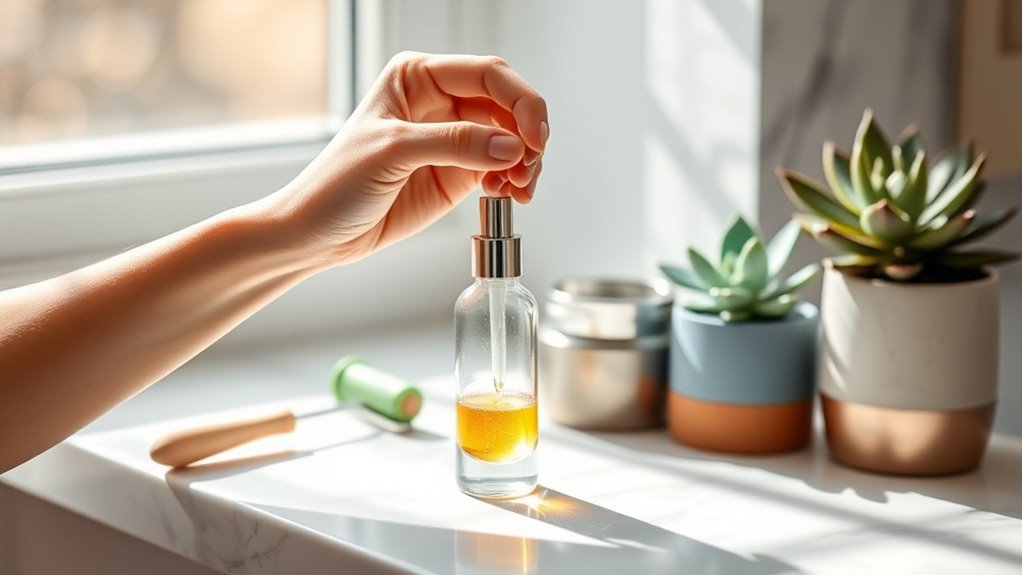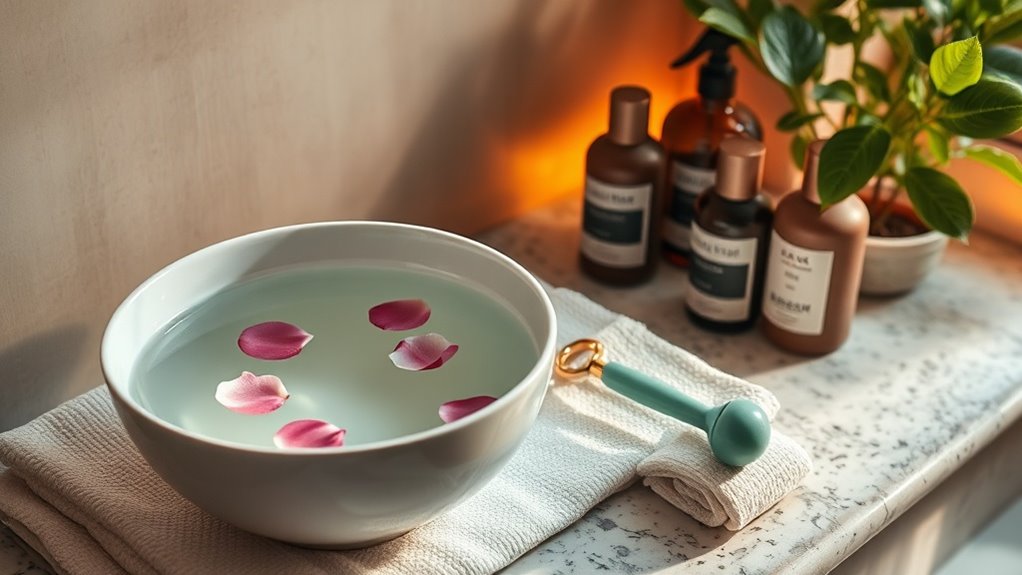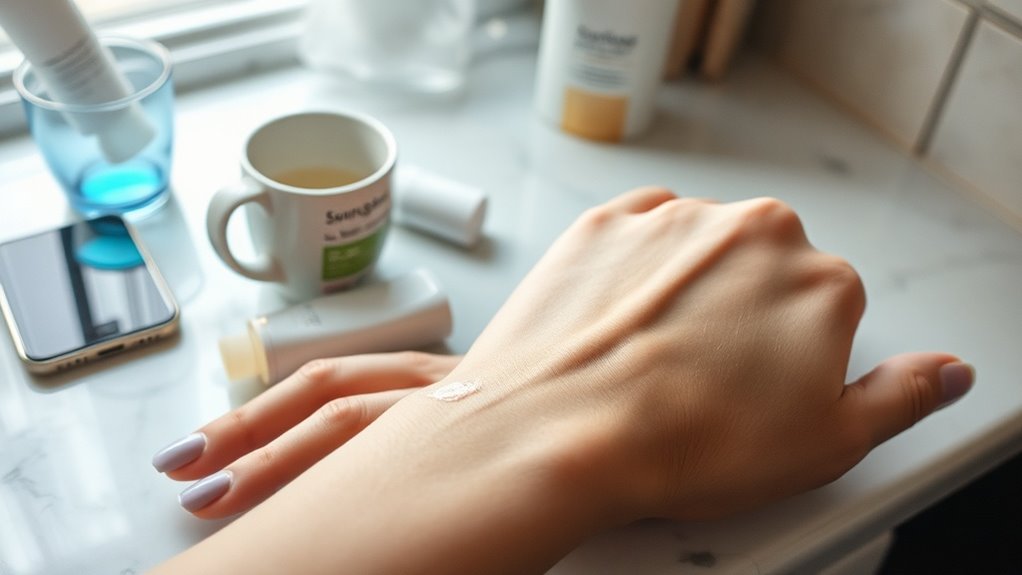You’re Probably Missing This Step in Your Skincare Routine
You might be overlooking a vital step in your skincare routine: exfoliation. It’s easy to forget about, but this process is essential for removing dead skin cells and enhancing product absorption. If you’re after smoother, more radiant skin, understanding how to incorporate this step effectively can make all the difference. But before you grab any product, there are important factors to consider for your unique skin type. Curious about how to choose the right exfoliant?
Understanding the Importance of Exfoliation
Exfoliation plays a crucial role in maintaining healthy skin, as it helps remove dead skin cells and promotes cell turnover. To enhance your skincare routine, incorporate exfoliation a few times a week, depending on your skin type. This step can improve texture, boost radiance, and enhance absorption of other products. Regular exfoliation can also prevent rough and uneven skin texture, ensuring your skin stays smooth and vibrant. Keep these skincare routine tips in mind to achieve your best skin ever!
Choosing the Right Exfoliant for Your Skin Type
When it comes to exfoliating, understanding whether to use a chemical or physical exfoliant is key for your skin type.
You’ll also want to pay attention to your skin’s sensitivity and adjust the frequency of exfoliation accordingly. Over-exfoliating can lead to barrier damage, resulting in irritation and compromised skin health.
Let’s explore some essential tips to help you choose the perfect exfoliant for radiant, healthy skin.
Chemical vs. Physical Exfoliants
Choosing the right exfoliant for your skin type can significantly impact your skincare routine, so it’s essential to understand the differences between chemical and physical exfoliants.
Chemical exfoliants, like AHAs and BHAs, dissolve dead skin cells, making them great for acne-prone or dull skin.
Physical exfoliants, such as scrubs, manually buff away dead skin.
Consider your skin’s needs to pick the best option!
Skin Sensitivity Considerations
Understanding your skin’s sensitivity is crucial in selecting the right exfoliant, as using the wrong product can lead to irritation or breakouts.
If you have sensitive skin, opt for gentle exfoliants like lactic acid or finely milled scrubs.
For oily or resilient skin, stronger options like glycolic acid may work better.
Always patch-test new products to prevent adverse reactions.
Frequency and Application Tips
Finding the right exfoliant also involves knowing how often to use it and how to apply it for the best results.
For sensitive skin, exfoliate once or twice a week; for oilier skin types, try two to three times.
Apply gently with circular motions and avoid aggressive scrubbing.
Always follow with moisturizer to keep your skin hydrated and healthy after exfoliation.
How Often Should You Exfoliate?
How frequently should you exfoliate your skin for optimal results?
Generally, you should aim to exfoliate 1 to 3 times a week, depending on your skin type.
If you’ve got sensitive skin, stick to once a week.
For oilier skin, you might benefit from more frequent exfoliation.
Listen to your skin; adjust your routine accordingly for the best results. Over-exfoliating can lead to the dangers of skin damage, so it’s essential to monitor how your skin reacts to your exfoliation schedule.
Common Exfoliation Mistakes to Avoid
When it comes to exfoliating, many people make common mistakes that can harm their skin. You might find yourself over-exfoliating, using products not suited for your skin type, or simply choosing the wrong products altogether. In fact, over-exfoliating can lead to irritation, which can cause long-term damage rather than the desired smooth and radiant complexion. Let’s explore these pitfalls and how to avoid them for a healthier glow.
Over-exfoliating Your Skin
Although exfoliating can transform your skin by removing dead cells and promoting a radiant complexion, over-exfoliating often leads to irritation and damage.
You might think more is better, but frequent scrubbing or using harsh products can compromise your skin barrier.
Stick to exfoliating once or twice a week, and pay attention to how your skin responds to maintain its health.
Ignoring Skin Types
Ignoring your skin type can lead to serious exfoliation mistakes that may worsen your complexion instead of improving it. Understanding whether your skin is oily, dry, or sensitive helps you choose the right exfoliation method. Here’s a quick guide:
| Skin Type | Exfoliation Method |
|---|---|
| Oily | Chemical exfoliants |
| Dry | Gentle scrubs |
| Sensitive | Enzyme-based products |
Wrong Product Choices
Choosing the wrong exfoliation products can derail your skincare routine, leaving your skin feeling worse instead of refreshed.
Avoid harsh scrubs that can irritate, especially if you have sensitive skin. Instead, opt for chemical exfoliants like AHAs or BHAs that cater to your skin type.
Always patch-test new products and don’t over-exfoliate—two to three times a week is ideal for most skin types.
Incorporating Exfoliation Into Your Routine
Exfoliation is a vital step in any effective skincare routine, as it helps remove dead skin cells and reveal a brighter, smoother complexion. To achieve radiant skin through gentle exfoliation, it’s essential to incorporate it successfully into your routine by following these steps:
- Choose a suitable exfoliant type (physical or chemical).
- Use it 1-3 times a week, based on your skin’s needs.
- Apply on clean skin.
- Always follow up with moisturizer.
Complementary Products for Maximum Benefits
To maximize the benefits of your skincare routine, you should consider incorporating complementary products that enhance the efficacy of exfoliation.
Pair your exfoliator with hydrating serums and moisturizers to replenish your skin’s moisture barrier. Look for antioxidants like vitamin C to promote healing and boost radiance.
Adding a soothing toner can also help balance your skin, ensuring a smoother, healthier appearance. Furthermore, understanding the importance of an effective moisturizer will ensure your skin retains optimal hydration levels.




